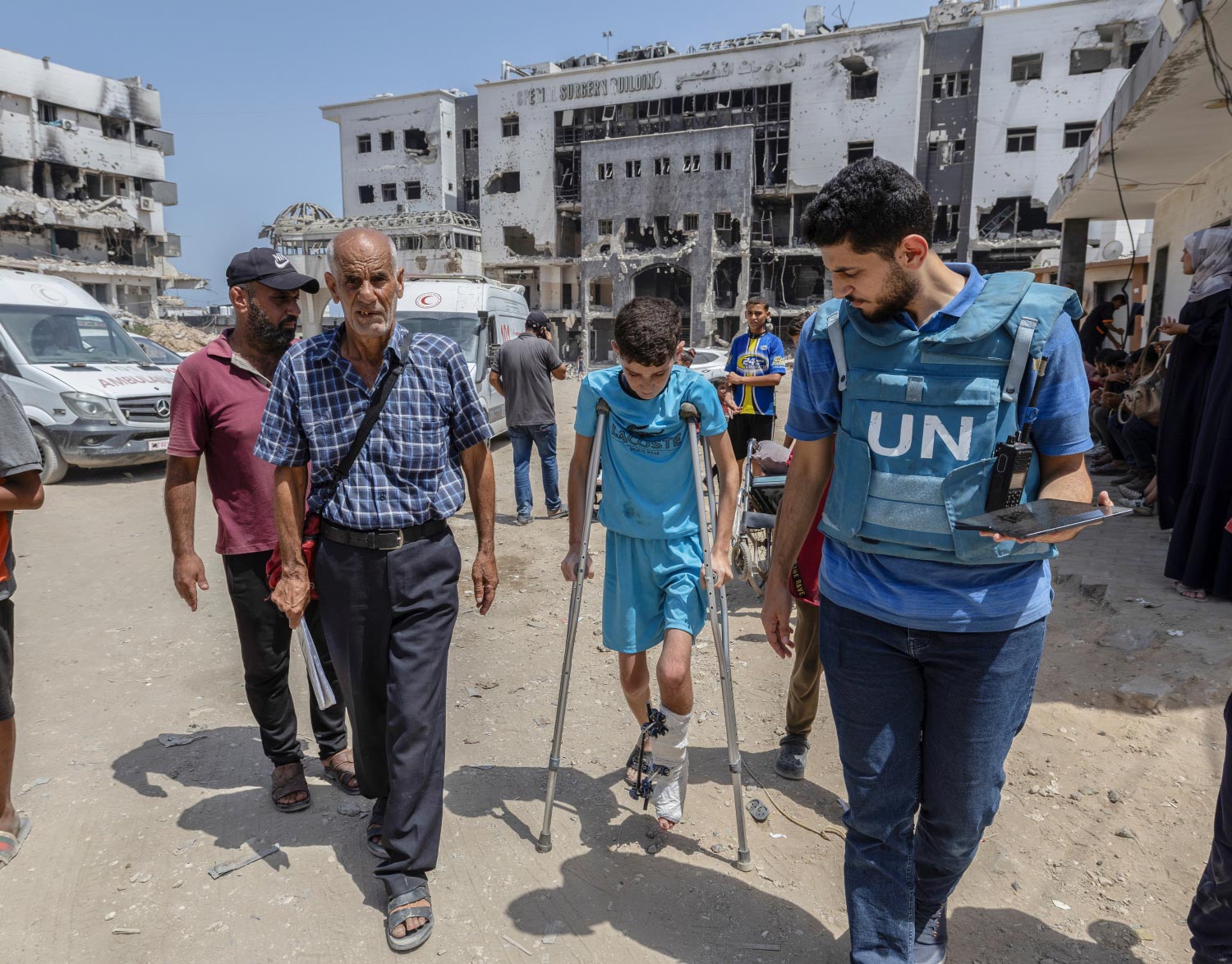
WHO Report – Estimating trauma and rehabilitation needs in Gaza – Sept 2025
2 October 2025, Jerusalem- Nearly 42 000 people in the Gaza Strip have life-changing injuries caused by the ongoing conflict, according to the latest WHO estimates released today. One in four of these injuries are in children.
Life-changing injuries account for one quarter of all reported injuries, of a total of 167 376 people injured since October 2023. Over 5000 people have faced amputation. Based on a larger pool of data, the findings are consistent with WHO’s previous analysis.
Other severe injuries, including to arms and legs (over 22 000), to the spinal cord (over 2000), to the brain (over 1300), and major burns (more than 3300) are also widespread, further increasing the need for specialized surgical and rehabilitation services and deeply affecting patients and their families across Gaza.
The report also highlights the prevalence of complex facial and eye injuries, especially amongst patients listed for medical evacuation outside Gaza, conditions often leading to disfigurement, disability, and social stigma.
The updated analysis draws on data from 22 WHO-supported Emergency Medical Teams (EMTs), Gaza’s Ministry of Health, and key health partners, providing a more comprehensive picture of rehabilitation needs as a result of severe trauma injuries.
As new injuries mount and health needs rise, the health system teeters on the brink of collapse. Only 14 of Gaza’s 36 hospitals remain partially functional, while less than one-third of pre-conflict rehabilitation services are operating, with several facing imminent closure. None are fully functional despite the efforts of EMTs and health partners.
The conflict has devastated the rehabilitation workforce. Gaza once had around 1300 physiotherapists and 400 occupational therapists, but many have been displaced, and at least 42 had been killed as of September 2024, according to the report. Today, one rehabilitation health worker was reportedly killed and one injured, along with two other health workers in the same attack. Those providing care are experiencing extreme stress and suffering. Despite the huge number of amputations, Gaza has only 8 prosthetists to manufacture and fit artificial limbs.
“Rehabilitation is vital not only for trauma recovery but also for people with chronic conditions and disabilities, which are not reflected in this report,” said Dr Richard Peeperkorn, WHO Representative in the occupied Palestinian territory. “Displacement, malnutrition, disease, and the lack of assistive products mean that the true rehabilitation burden in Gaza is far greater than the figures presented here. Conflict-related injuries also carry a profound mental health toll, as survivors struggle with trauma, loss, and daily survival while psychosocial services remain scarce. Mental health and psychosocial support must be integrated and scaled up alongside rehabilitation.”
WHO, EMTs and other health partners remain on the ground, working to meet urgent health needs. But to ensure access to care and scale up services, including rehabilitation, the report highlights that there must be urgent protection of health care, unhindered access to fuel and supplies, and the removal of restrictions on the entry of essential medical items, including assistive devices. Above all, WHO calls for an immediate ceasefire. The people of Gaza deserve peace, the right to health and care, and a chance to heal.
For more information
Bisma Akbar, Communication Officer -








